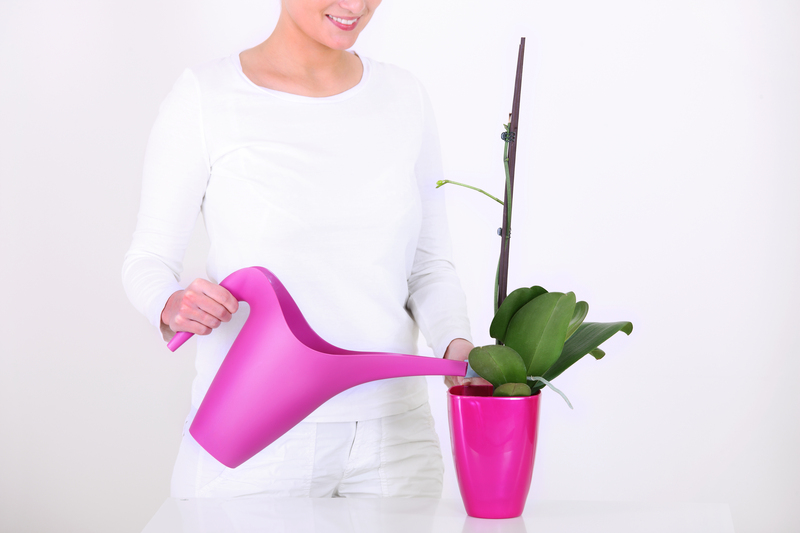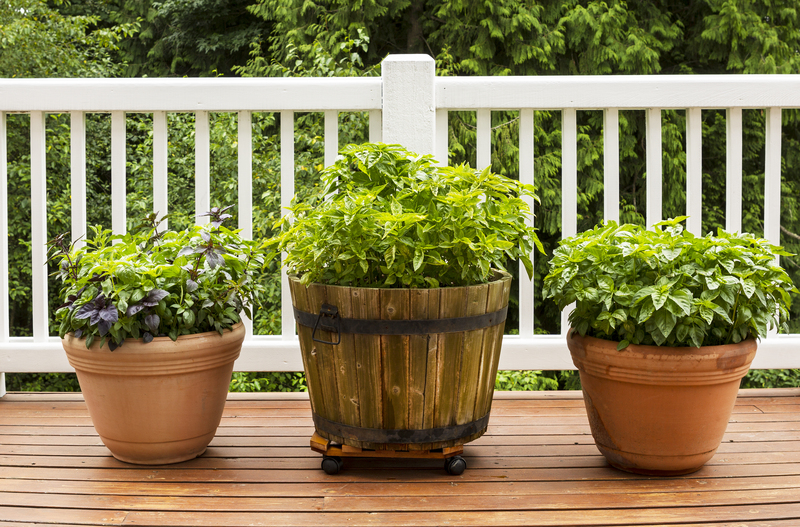Creating a Blooming Garden alongside Your Dogs
Posted on 26/09/2025
Creating a Blooming Garden alongside Your Dogs
Every dog owner wishes to enjoy a beautiful blooming garden while letting their furry companions frolic safely and happily. The good news is that with some thoughtful planning and a few smart choices, cultivating a lush and colorful paradise that is also safe for your dogs is not just a dream--it's absolutely achievable! In this comprehensive guide, you will discover practical tips, dog-friendly gardening ideas, and expert strategies for successfully creating a blooming garden alongside your dogs.
Why Combine a Blooming Garden and Dogs?
Your dog is more than just a pet--they are a part of your family. Naturally, you want them to enjoy the outdoors as much as you do. Having dogs and gardens coexist harmoniously enriches the lives of both humans and pets. Here are some top reasons:
- Physical & Mental Stimulation: Dogs benefit from exploring sensory-rich gardens with various textures, scents, and sounds.
- Stress Reduction: Beautiful landscapes soothe the mind for both you and your four-legged friend.
- Bonding Time: Tending to your garden with your dog creates memorable moments together.
- Eco-friendly Living: You can foster a sustainable, pet-safe landscape that nurtures local ecosystems.
Ready to discover how dogs and gardens can grow together beautifully? Let's begin!

Designing a Dog-Friendly Blooming Garden: Planning Essentials
Before putting shovel to soil, ask yourself the following:
- What breed or personality is your dog? Energetic breeds dig and run; mellow dogs may just nap in the sun.
- Which areas need blooms and which need grass or hardscape?
- How much time can you devote to maintenance? Low-maintenance plants may work best for busy dog owners.
Here are some fundamental planning steps for building a blooming garden with dogs:
1. Choose a Safe, Secure Layout
- Fencing: Use secure, dog-safe fencing to define boundaries and protect delicate flower beds.
- Clear Pathways: Design winding paths for your dog to patrol, preventing trampling through treasured blooms.
- Zoning: Dedicate separate zones for romping, relaxing, and planting by using raised beds or decorative edging.
2. Pick Dog-Proof, Blooming Plants
Not all flowers and shrubs are safe for dogs. Some common plants are toxic and must be avoided. Check out these pet-friendly, blooming plants for your yard:
- Roses (with thorns trimmed)
- Sunflowers
- Magnolia Trees
- Snapdragons
- Asters
- Marigolds (Calendula)
- Cornflower/Bachelor's Button
- Camellias
- Zinnias
- Fuchsias
Avoid toxic varieties like: lilies, foxglove, azaleas, oleander, daffodils, tulips, and sago palm. When in doubt, double-check the ASPCA list for dog-safe plants.
3. Soil, Mulch, and Fertilizer Choices
- Organic Compost: Enrich your soil naturally--dogs like to dig, so avoid toxic chemicals.
- Pet-Safe Mulch: Pine, cedar, or shredded bark are safer than cocoa mulch (which is toxic).
- Natural Fertilizers: Choose manure, fish emulsion, or compost and avoid synthetic fertilizers and pesticides.
Dog-Friendly Landscaping Features That Promote Bloom & Play
Harmonizing dogs and a blooming garden is about balancing beauty with function. Consider these landscaping features:
1. Dog Paths and Races
- Work with your dog's habit of patrolling perimeters or favorite "roads"--lay stepping stones, pea gravel, or turf for durable tracks.
- Create *gentle curves* to direct movement around flower beds and not through them.
2. Sturdy Raised Beds
- Protect delicate blooming plants by elevating them out of paw's way with stone, brick, or heavy wood frames.
- Double as a landscape feature and dog deterrent.
3. Shade and Retreat Zones
- Plant trees or install pergolas to give your dog escape from summer heat while providing structure for lovely climbing flowers.
- Doghouses, tunnels, and even sand pits encourage appropriate digging instead of upending prized plants.
4. Water Elements for Dogs
- Add a shallow fountain, splash zone, or dog-friendly pond where your pet can hydrate and cool off.
- A birdbath can attract pollinators while keeping dogs away from deeper water features.
The Do's & Don'ts for Gardening with Dogs
- Do train your dog with consistent cues to avoid garden beds.
- Don't use insecticides or herbicides that are not labeled as pet and wildlife safe.
- Do choose tough, dog-tolerant ground covers like clover, creeping thyme, or buffalo grass.
- Don't leave garden tools or hoses lying around for your dog to chew or trip on.
- Do offer alternative fun, such as a sandbox for digging, chew-safe toys, and designated play spaces.
- Don't ignore your furry pal's curiosity--dogs like to investigate changes in their domain!
Maintaining Your Blooming Garden alongside Dogs: Pro Tips
1. Establish Routines & Rules
- Walk the garden with your dog on-leash at first--redirect any digging or trampling behaviors.
- Reward positive interactions and use a firm "leave it" for off-limits areas.
2. Spot Treat and Repair
- For urine burns: Flush the area with water and re-seed with dog-tough grass blends.
- Patch holes promptly--cover with gravel or robust ground covers.
3. Mulch Regularly, Mulch Wisely
- Topped-up mulch protects roots and discourages digging.
- Replenish as needed--avoid cocoa shell mulch, which is toxic to pets.
4. Seasonal Upkeep
- Prune blooming plants after flowering or as per their growth cycle.
- Rake heavy leaf fall to prevent mold and keep play areas safe and tidy.
- Check for ticks or plant pests often, especially if your dog likes to burrow in thick foliage.
Common Challenges: Solutions for Blooming Gardens with Dogs
No landscape is without its hiccups. Here are typical scenarios and solutions:
Challenge: Dog Digging Up Flower Beds
Solution: Offer a dedicated digging area (filled with sand or loose soil) and praise your dog for using it. Barrier plants and edging can deter canine intrusions.Challenge: Yellow Lawn Patches from Urine
Solution: Encourage hydration, designate a potty spot, and flush with water immediately after urination.Challenge: Dogs Eating Plants
Solution: Supervise play, opt for bitter-tasting or fuzzy-leaved plants, and reinforce obedience training.Challenge: Trampled Borders and Burned Bushes
Solution: Line beds with stones or decorative logs; install low fencing or animal-safe deterrent sprays.Blooming Garden Ideas: Seasonal Inspiration for Dog Owners
Spring-Summer Blooming Picks
- Lamb's Ear (soft, velvety and non-toxic)
- Coneflower
- Bee Balm
- Black-Eyed Susan
- Hibiscus
Fall-Winter Interest Plants
- Pansies
- Camellia sasanqua
- Witch Hazel
- Cyclamen
- Dog-Safe Ornamental Grasses
Design Tip:
Plant flower groupings in masses for dramatic seasonal color--and place the most delicate blooms furthest from play zones.
Dog Safety in the Garden: Vital Reminders
- Supervision: Even in a fenced yard, it's smart to keep an eye on your dog while gardening or when introducing new plants.
- Microchips & ID: Gardens entice digging--and digging can create escape routes! Microchip and use a collar ID, always.
- First Aid Kit: Keep pet-friendly first aid on hand for minor scrapes or tick removal.
- Hydration: Supply multiple sources of clean, fresh water in shaded parts of the garden.
Eco-Friendly Gardening: Creating Habitat & Harmony
Why not design your dog-friendly blooming garden to benefit pollinators, birds, and beneficial insects? Here's how to promote a thriving ecosystem:
- Plant native flowers that attract bees and butterflies--but make sure they're non-toxic to pets.
- Build bug hotels or leave logs for beetles, which both fascinate and feed local wildlife.
- Install bird feeders well out of reach of canine curiosity.

Frequently Asked Questions: Dogs in Blooming Gardens
Can I have a rose garden with dogs?
Absolutely! Rose petals are non-toxic to dogs. Trim sharp thorns from lower branches to prevent injuries and choose sturdy rose varieties.Are there any dog-safe fertilizers?
Yes. Use organic compost, manure, fish emulsion, or worm castings. Avoid synthetic "weed & feed" types and always store lawn care products safely away from pets.How can I train my dog to stay out of flower beds?
Use positive reinforcement, garden fencing, and reward calm behavior near beds. Walking your dog along defined paths and providing alternative entertainment helps enforce your boundaries.Conclusion: Harmony Awaits in Your Dog-Friendly Blooming Garden
With careful planning and thoughtful plant choices, you can create a safe, blooming, dog-friendly garden that delights the senses of both you and your canine companion. Remember to prioritize pet-safe plants, sturdy design, and consistent training for lush flowerbeds and a happy, healthy dog. Your dream yard--burgeoning with blooms and full of furry joy--is within reach. Start sowing the seeds of harmony today for years of blooming, tail-wagging bliss!

